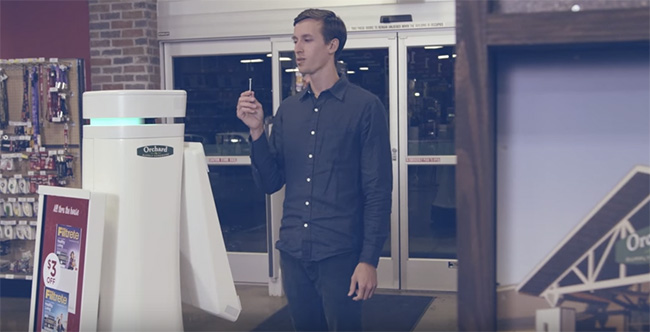A Robot in one of Lowe’s Orchard Supply stores. Source: YouTube/Orchard Supply Hardware
In 1946, Ford Motor Company was using automation in the form of robots. Specifically to perform single tasks such as stamping out fenders. But, robots have come a long way!
Microchips are more sophisticated. Robots today can complete almost any task. Machines use numerically controlled technology, derived from computers, to control motions and actions based on predetermined programs. They have the ability to respond, discuss, lead and solve. They’re smart! And now robots are being tested for in-store customer engagements.
A year ago, Lowe’s tested multilingual robots at one of its Orchard Supply Hardware stores to help with customer service. The robots greeted customers at the door, asked them what they needed, and identified items using a 3D scanner, voice or keypad. Then they told the customer if the item was in stock and, if so, led the customer to the item. How many retail employees can do that?
Now Target is testing robots. The capabilities of Target’s robots have not been released, but one can surmise that they will replace basic associates tasks. “We know that technology will continue to revolutionize retail and that Target’s future will be built on innovation,” Casey Carl, Target’s Chief Strategy and Innovation Officer, said in a press release.
As technology becomes cheaper and more sophisticated, industries will gravitate towards more automation. Like the automobile industry, retailers may find that robots can perform tasks longer, more consistently, and in the long run at less cost than humans.
How much of this is driven by productivity, minimum wage demands, and financial benefits, is all speculation. But a recent study by the University of Oxford concluded that as much as half the U.S. workforce is at risk of being replaced by mobile robots and “smart” computers within the next two decades. Will retail be one of them?
If so, there are steps retailers can take to prepare. They will need to simplify complex processes—break them down into smaller components—then reconstruct more complex processes out of these smaller tasks. Why? Because the smaller tasks will be common to many of the complex tasks. They will be ‘reusable components’. And this will make it easier to write code for the eventual robots.
